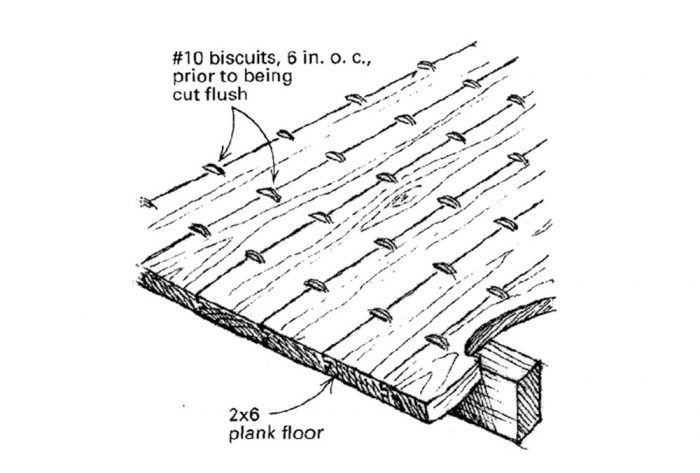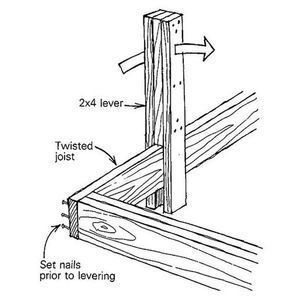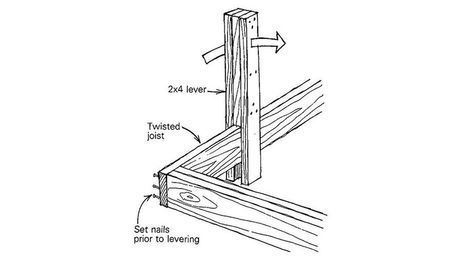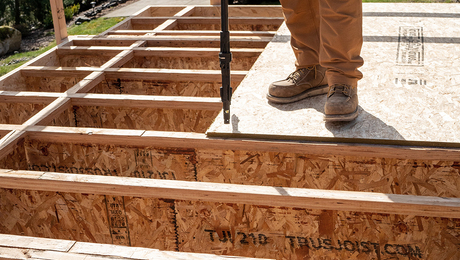
Here’s an application I never suspected when I purchased a plate joiner. I was confronted with a squeaky 2×6 tongue-and-groove floor laid atop 4×6 beams on 4-ft. centers. The floor had squeaked for over 20 years, and the substantial spans between the beams didn’t offer much anchorage for more fasteners.
After considering my options, I made about 300 slots with my plate joiner on 6-in. centers at the intersections of the boards. As shown in the drawing, I then inserted #10 biscuits, liberally basted with yellow glue, into each slot.
Once the glue cured, I used a chisel to lop off the tops of the biscuits, and a belt sander to bring them flush with the flooring. The floor, which was then covered with carpeting, is now completely squeak-free.
—L.E. Lindstrom, Alhambra, CA
Edited and illustrated by Charles Miller
From Fine Homebuilding #86






























View Comments
There was a technique for squeak free oak plank flooring used in the 1900 through the 1920s and maybe later. The floor joists were covered with shiplap planks at a 45 degree angle to the floor joists. Then a building paper, not asphalt impregnated but something reddish colored was placed under the oak tongue and groove planks that were nailed perpendicular to the direction of the floor joists.I have seen this done in the 1970s too. I think is was a combination of the shiplap laid at a 45 degree angle and the paper between the oak and the shiplap that prevented squeaking as the boards moved. Cut nails were driven through the tongue into the sub-floor and this also forced the adjacent boards together.